Global Market Comments
April 21, 2025
Fiat Lux
Featured Trade:
(MARKET OUTLOOK FOR THE WEEK AHEAD, or IN SEARCH OF THE LOST MARKET BOTTOM),
(SPY), (TLT), (NFLX), (COST), (NVDA), (TSLA), (MSTR)

Global Market Comments
April 21, 2025
Fiat Lux
Featured Trade:
(MARKET OUTLOOK FOR THE WEEK AHEAD, or IN SEARCH OF THE LOST MARKET BOTTOM),
(SPY), (TLT), (NFLX), (COST), (NVDA), (TSLA), (MSTR)

Global Market Comments
April 17, 2025
Fiat Lux
Featured Trade:
(THE MAD HEDGE TRADERS & INVESTORS SUMMIT REPLAYS ARE UP)
(APRIL 16 BIWEEKLY STRATEGY WEBINAR Q&A),
(SPY), (SH), (SDS), (TLT), (MSTR), (GLD),
(GOLD), (SLV), (AGQ), (NEM)

Global Market Comments
April 14, 2025
Fiat Lux
Featured Trade:
(MARKET OUTLOOK FOR THE WEEK AHEAD or REARRANGING THE DECKCHAIRS ON THE TITANIC),
(SPY), (GLD), (NFLX), (NVDA), (TLT), (MSTR), (SVXY), ($VIX)
(AMZN), (AAPL), (GOOGL), (PANW), (NFLX), (CORN), (WEAT), (SOYB)

Global Market Comments
April 4, 2025
Fiat Lux
Featured Trade:
(APRIL 4 BIWEEKLY STRATEGY WEBINAR Q&A),
(DAL), (LCID), (RIVN), (MSTR), (PLTR),
(AAPL), (GLD), (TSLA), (SLV), (SPY)

Global Market Comments
November 22, 2024
Fiat Lux
Featured Trade:
(WEDNESDAY, JANUARY 22, 2025 ST AUGUSTINE FLORIDA STRATEGY LUNCHEON)
(NOVEMBER 20 BIWEEKLY STRATEGY WEBINAR Q&A),
(NVDA), (TSLA), (TLT), (OXY), (SLB), (MSTR), (USO), (PLTR), (SMCI), (KRE), (SMR), (UUP)

Below, please find subscribers’ Q&A for the November 20 Mad Hedge Fund Trader Global Strategy Webinar, broadcast from Lake Tahoe, Nevada.
Q: What are your stock recommendations for the end of the first quarter of 2025?
A: I say run with the winners. Dance with the girl who brought you to the dance. I think portfolio managers are going to be under tremendous pressure to buy winners and sell losers. And, of course, you all know the winners—they’re the stocks I have been recommending all year, like Nvidia (NVDA), Tesla (TSLA), and so on. And they're going to sell losers like energy to create the tax losses to offset their gains in the technology area. That could continue well into next year. Although, we’ve probably never entered a new administration with more uncertainty at any time in history, except maybe during the Civil War. I don’t think it will get as bad as that, but it could be bad.
Q: Is Putin bluffing about nuclear war?
A: Yes. First of all, Russia has 7,000 nuclear weapons, but only maybe 200 of those work. If he does use nuclear weapons, Ukraine will use its nuclear weapons in retaliation. During the Soviet Union, where did the Soviet Union make all their nuclear weapons? In Ukraine. That's where they had the scientists. They certainly have the Uranium—that's the hard part. You could literally put one together in days if you had the right expertise around. This will never go nuclear, and Putin has always been all about bluffing. There's a reason why the world's greatest chess masters are all Russian; it's all about the art of bluffing. So that doesn't worry me at all.
Q: Will Russia sacrifice a higher and higher percentage of its population in the war?
A: Yes, that is the military strategy: keep throwing bodies at your enemy until they run out of bullets.
Q: What is your prediction for 30-year US Treasury yields (TLT)?
A: They go higher. Higher for longer certainly includes the 30-year. The 30-year will be the most sensitive to long-term views of interest rates. If you get a return of inflation, which many people are predicting, the 30-year gets absolutely slaughtered. Adding a potential $10 trillion to the national debt, taking it to $45 trillion, is terrible for debt instruments everywhere.
Q: Should we be exiting the LEAPS that you put out on Occidental Petroleum (OXY) and Schlumberger (SLB)?
A: For Occidental, I would say maybe; it’s already at a low. The outlook for oil prices is poor, with massive new production coming on stream. Regarding Schlumberger, they make their money on the volume of oil production—that probably is going to be a big winner.
Q: What do you think interest rates will do as we go into the end of Powell's term in 18 months?
I have no idea. It just depends on how fast inflation returns. My guess is that we'll get an out-of-the-blue sharp uptick in inflation in the next couple of months, and when that happens, stocks will get slaughtered. People assume that inflation just keeps going up forever after that.
Q: Crude oil (USO) has been choppy at around $70 a barrel. Where do you see it going next year?
A: My immediate target is $60, and possibly lower than that. It just depends on how fast deregulation brings on new oil supplies, especially from the federal lands that have been promised to be opened up. As it turns out, the federal government owns most of the western United States—all the national forests and so on. If you open that up to drilling, it could bring huge supplies onto the market. That would be deflationary. It would be death for oil companies, but it would be a death for OPEC as well. Every cloud has a silver lining. OPEC has been a thorn in my side for the last 60 years.
Q: I'm tempted to buy stocks that are flying up, like Palantir (PLTR) and MicroStrategy (MSTR). What would be an experienced investor trade in these situations?
A: Don't touch them with a 10-foot pole. You buy stocks before they fly up, not afterwards. By the way, if anyone knows of an attorney who is an expert at recovering stolen Crypto, please contact me. I have several clients who've had their crypto accounts cleaned out. Oh, and by the way, the heads of every major crypto exchange have been put in jail in the last three years. Imagine if the heads of Goldman Sachs, Morgan Stanley Fidelity, and Vanguard were all put in jail for fraud and theft? How many stocks would you want to buy after that? Not a lot.
Q: Your recommendations for AI and chips?
A: I think you get a slowdown. In order to buy the new plays in banks, brokers, and money managers, you need to sell the old plays. Those are going to be technology stocks and AI stocks—AI itself will keep winning. They will keep advancing, but the stocks have become extremely expensive. And everyone is waiting to see how anti-technology the new administration will be. Some of the early appointments have been extremely anti-technology, promising to rein in big tech companies. If you rein in big tech companies, you rein in their stock prices, too. I am being very cautious here. The next spike up in Nvidia (NVDA) might be the one you want to sell.
Q: Do you think the uranium play will continue under the new administration?
A: Absolutely, yes. Restrain the Nuclear Regulatory Commission, and costs for the new nuclear starts up like (SMR) go way down.
Q: What do you think of NuScale Power Corp (SMR)?
A: I love it. Again, deregulation is the name of the game—and if you lose a city by accident, tough luck. Let's just hope it happens somewhere else. It's only happened three times before… Three Mile Island, Chernobyl, and Fukushima.
Q: Super Micro Computer (SMCI), what do you think?
A: Don't touch it. There's never just one cockroach. Hiring a new auditor to find out how much money they misrepresented is not a great buy argument to buy the stock. I'm sorry. Very high risk if you get involved.
Q: If Nvidia (NVDA) announces great earnings but sells off anyway, what should I do?
A: Get rid of it and get rid of all your other technology stocks because this is the bellwether for all technology. Tech always comes back over the long term, but short term, they may continue going nowhere as they have done for the last six months, which correctly anticipated a Trump win. Trump is not a technology guy— he hates California. Any California-based company can't expect any favors except for Tesla.
Q: Is there any reason why you prefer in-the-money bull call spreads?
A: Well, there are lots of reasons. Number 1, it's a short volatility play. Number 2 it's a time decay play, which is why I only do front months because that's when the time decay is accelerated. Thirdly, it allows you to increase your exposure to the stock by tenfold, which brings in a much bigger profit when you're right. If you look at our trade alerts, we make 15% to 20% on every trade, and 200 trades a year adds up to a lot of money. You can see that with our 75% return for this year. And it's a great risk management tool; the day-to-day volatility of call spreads is low because you're long one call option short the other. So, the usual day-to-day implied volatility on the combination is only about 8% or 9%. The biggest problem with retail investors is the volatility scares them out of the market at market lows and scares them back in at market highs. So, call spread reduces the volatility and keeps people from doing that. The risk-reward is overwhelmingly in your favor if you have somebody like me with an 80% or 90% success rate making the calls on the stocks. And, of course, having done this for almost 60 years, nothing new ever happens in the stock market—you're just getting repetitions of old stuff. All I have to do is figure out is this the 1970s story, the 1980s story, the 1990s, the 2000s, 2010s story? I have to figure out which pattern is being repeated. People who have been in the market for one year, or even 10 years, don't have that luxury.
Q: I’m having trouble getting filled on your orders.
A: You put out a spread of orders. So if I put in an order to buy at $9.00, split your order up into five pieces: at $9.00, $9.10, $9.20, $9.30, $9.40; and one or all of those orders will get filled. Another hint is that algorithms often take my trade alerts to the maximum price. Don't pay more than that price immediately, but they have to be out by the end of the day, so if you just enter good-till-cancel orders, you have an excellent chance of getting filled by the end of the day or at the opening tomorrow.
Q: Should I purchase SPDR S&P Regional Banking ETF (KRE)?
A: I'd say yes. That probably is a good buy with deregulation, making all of these small banks takeover targets.
Q: What should we be looking for in the fear and greed index?
A: When we get to the high end, like in the 70s, start taking profits. When we get to the low end, like the 20s, start buying and adding LEAPS and more long-term leverage option plays.
Q: What are we looking for to go short?
A: Much higher highs and a bunch of other monetary and technical indicators flashing warning signals, which are too many to go into here. Suffice to say, we did make good money on the short side this year, a couple of times on Tesla (TSLA), including a pre-election short that we covered in Tesla, and we were short a whole bunch of technology stocks going into the July meltdown. So, you know, we do both the long side and the short side, but it's been a long play—11 months this year and a short play for a month.
Q: Is the euro going back up eventually, or does the dollar (UUP) rule?
A: Sorry, but as long as the US dollar has the highest interest rates in the developing world and the prospect of even higher rates in the future, it's going to be a dollar game for the next couple of years.
Q: Will a ceasefire in the Middle East affect the markets?
A: No. The U.S. interest in geopolitical data ends at the shores—all three of them. So if the war of the last couple of years doesn't change the market—and it's been an absolutely horrific war with enormous civilian casualties—why should the end of it affect markets?
Q: What stock market returns do you see for the next four years?
A: About half of what they were for the last four years, which will be about 90% by the time Biden leaves office. You're going to have much higher interest rates and much higher inflation, and while the new administration is very friendly for some industries, it is very hostile for others, and the net could be zero. So, enjoy the euphoria rally while it lasts.
Q: What about crypto?
A: Well, I did buy some crypto for myself at $6,000, and I'm now thinking of selling it at $96,000. Would I recommend it to a customer? Not on pain of death—not at this level. You missed the move. Wait for the next 95% decline, which is a certainty in the future. And, by the way, absolutely nobody in the industry can tell you when that is.
To watch a replay of this webinar with all the charts, bells, whistles, and classic rock music, just log in to www.madhedgefundtrader.com, go to MY ACCOUNT, select your subscription (GLOBAL TRADING DISPATCH, TECHNOLOGY LETTER, or Jacquie's Post), then click on WEBINARS, and all the webinars from the last 12 years are there in all their glory
Good Luck and Good Trading
John Thomas
CEO & Publisher
The Diary of a Mad Hedge Fund Trader
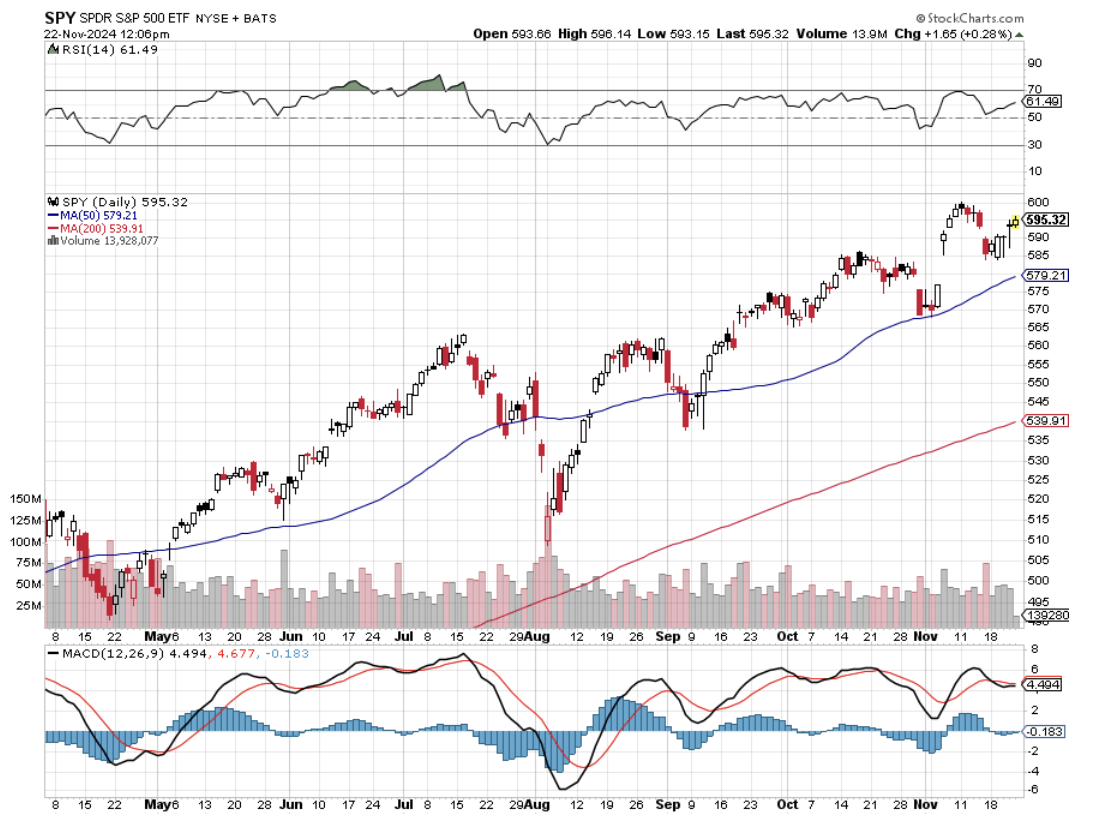
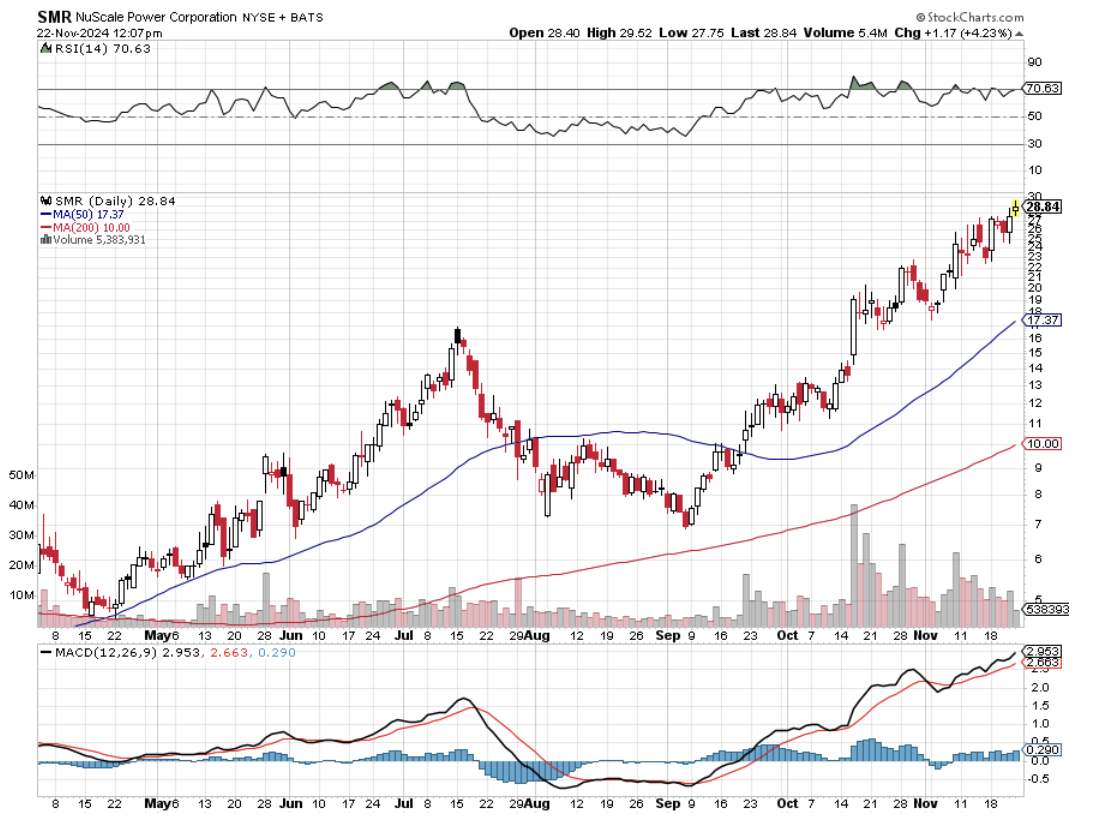
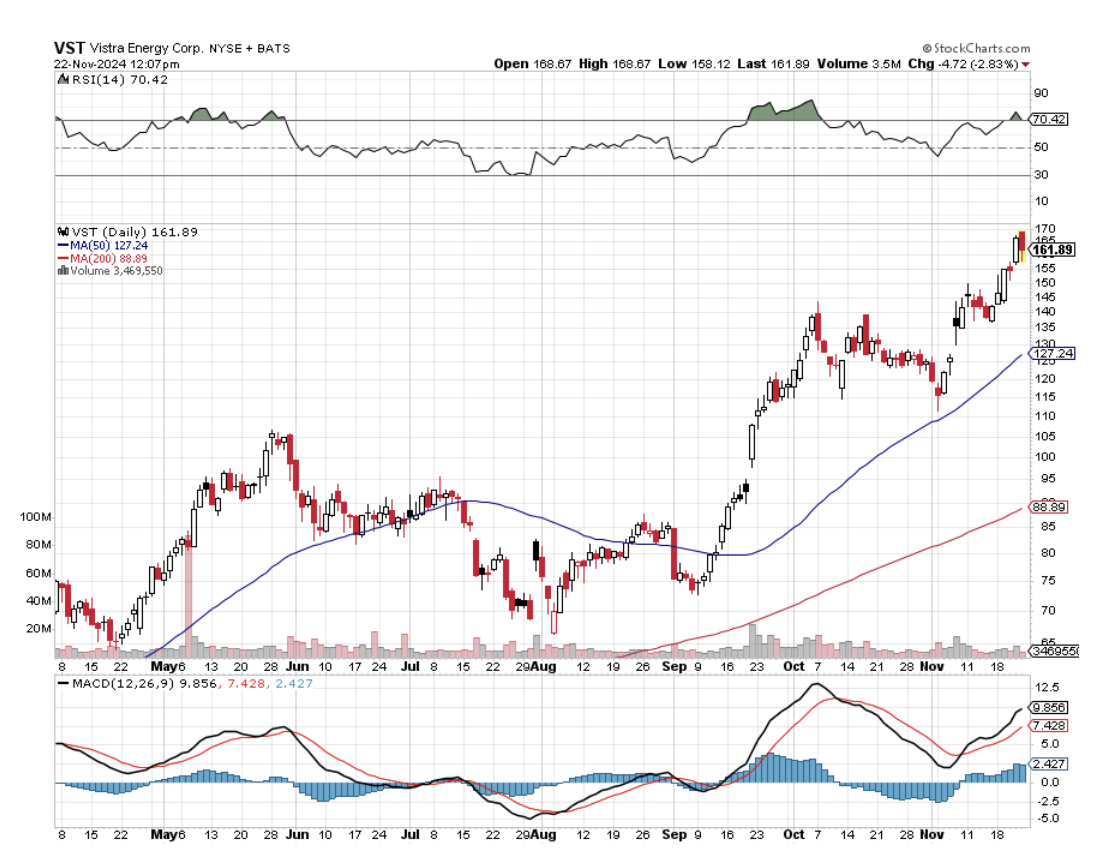
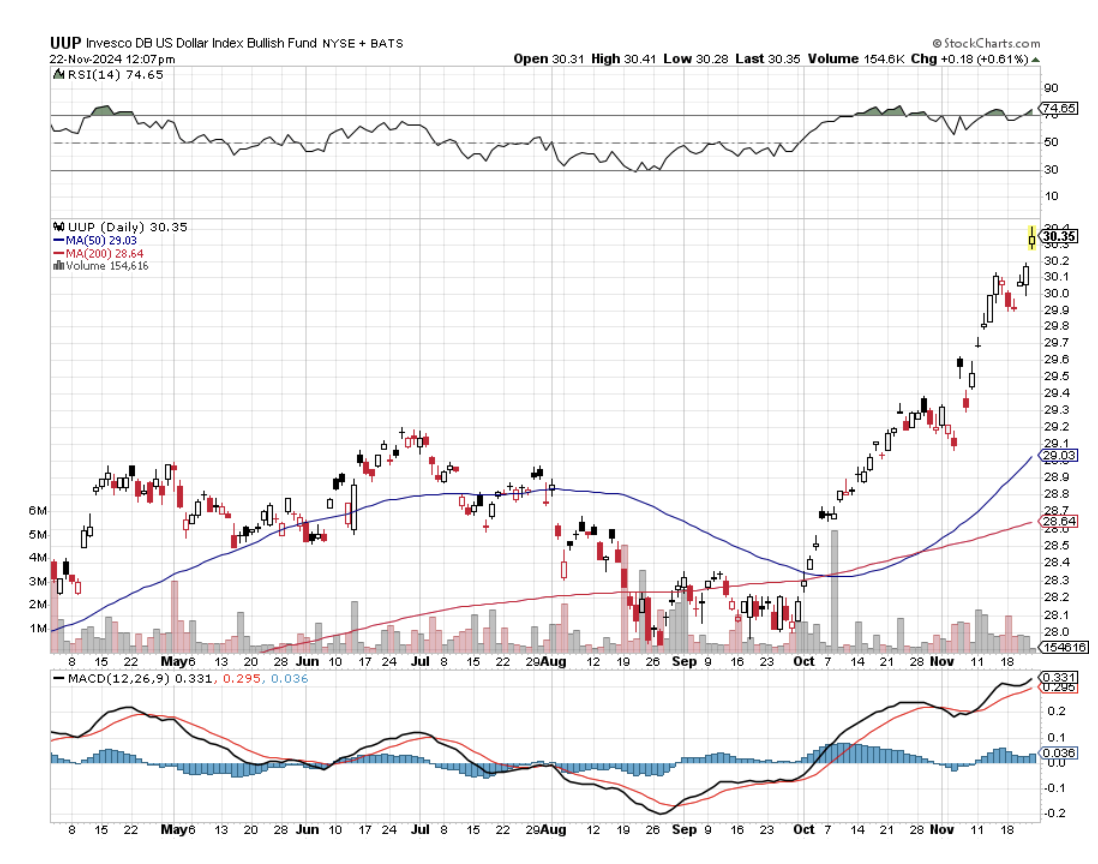
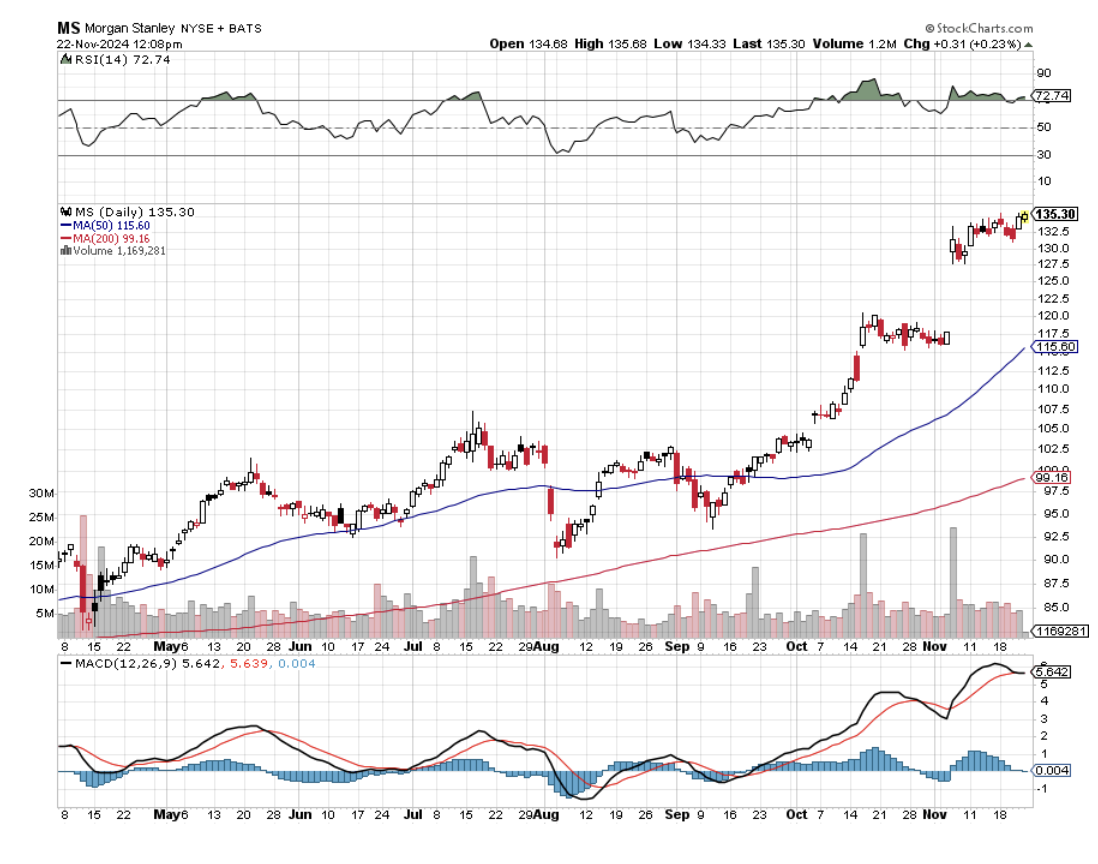
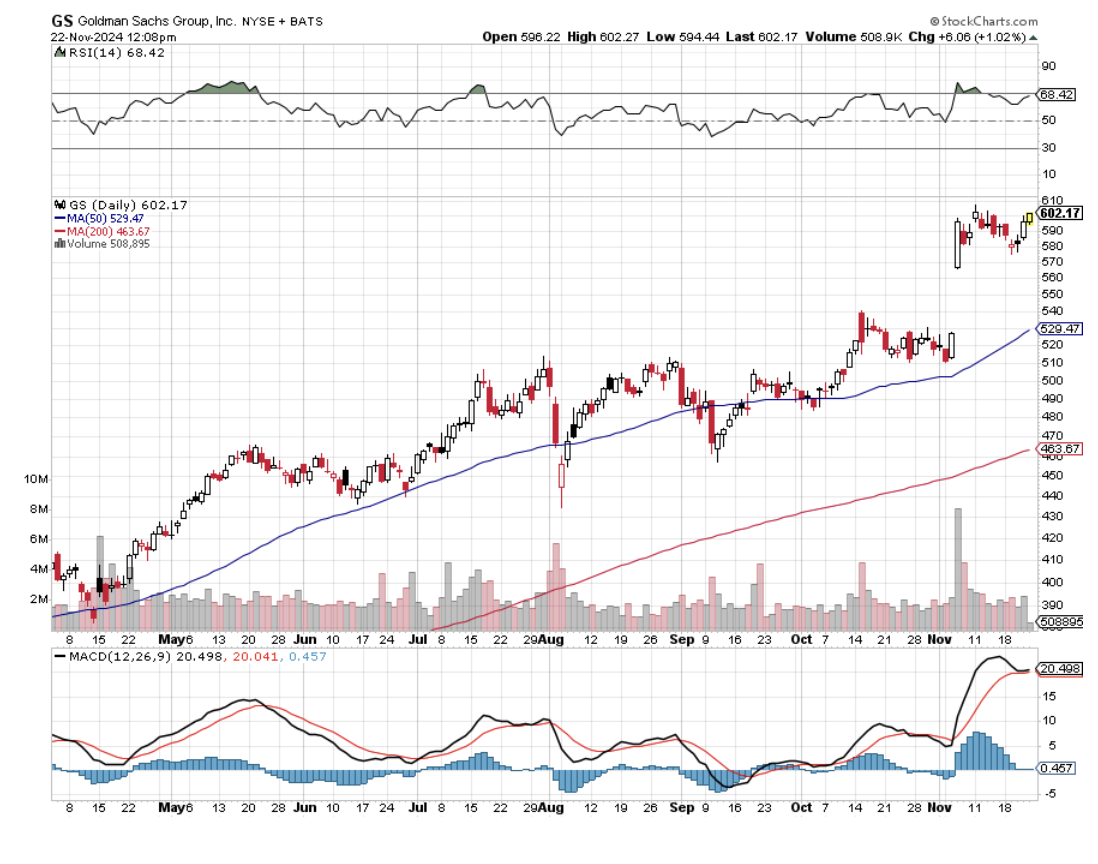
Global Market Comments
May 14, 2024
Fiat Lux
Featured Trade:
(LOOKING AT THE LARGE NUMBERS)
(TLT), (TBT) (BITCOIN), (MSTR), (BLOK), (HUT)

A friend of mine asked me what the Global Money supply was.
I just so happen to know that number. It is around $100 trillion. That includes the world's total M2 money supply, all the physical cash in circulation plus deposits, promissory notes, and other liquid money instruments.
Writing for The Economist magazine in London for ten years, I still constantly update these numbers in my mind. This, after all, is the air we breathe and the language we speak.
Then it occurred to me that most people don’t know these mega numbers, so I thought I would give you a basic primer and some conclusions.
Enjoy.
$1 quadrillion – the value of all assets in the world, both financial and physical
$100 trillion – Global money supply
$150 trillion – the value of all global bonds and fixed income securities
$100 trillion – the value of global stock markets
$54 trillion – US stock market capitalization
$30 trillion – the value of global real estate
$35 trillion – US National debt
$26 trillion – US GDP and end Q1 2024
$23 trillion – US M2 money supply
$20 trillion – total value of US real Estate
$14.4 trillion – GDP of China
$14 trillion – value of global physical gold holdings
$55.2 billion – 2021 US corporate profits
$8.3 trillion – US Federal Reserve balance sheet
$4.174 trillion – FY 2022 US Budget (click here for detail)
$1.6 trillion – 2021 US Budget deficit
$4 trillion – GDP of Germany
$2 trillion – the value of all issued crypto currencies
$1.5 trillion – GDP of California
$1.4 Trillion – GDP of Australia
$1 trillion – GDP of Russia
Looking at this impressive list of numbers, there is one that leaps right out at you. That is the value of crypto currencies, which is only $2 trillion, two-thirds of which is Bitcoin.
That is less than 2% of the value of all assets in the world, 1% of the Global money supply, 2.1% of US stock market capitalization. In other words, Bitcoin accounts for only a tiny share of global assets.
Which leads one to an obvious conclusion. The next big movement in money will be out of the largest asset classes into the smallest ones. The most obvious target here is the $150 trillion in the value of all bonds and fixed-income securities, most of which have negative yields, or yields close to zero.
Move even a small portion out of bonds into Bitcoin and its value has to double, triple, move up ten times, or even 100 times.
There are other screaming conclusions to be found in these numbers. The bond market (TLT) is toast and can only really go down from here. The same is true for the US dollar (UUP). Oh yes, and you want to buy the Australian dollar (FXA).
It gets better.
The US money supply is currently worth $20.5 trillion and is growing at a 30% rate. So, in a year it will be worth $26.65 trillion and in two years it will be worth. $34.65 trillion.
The biggest factor expanding the money supply today is NOT the government, but the explosive growth a US corporate profits, at $10 trillion in 2021, which is an essential bet on the future of everything.
And US corporate earnings could continue growing at this ballistic for another decade or more.
That means that not only will global liquidity continue to increase, but it will also do so at an exponential rate.
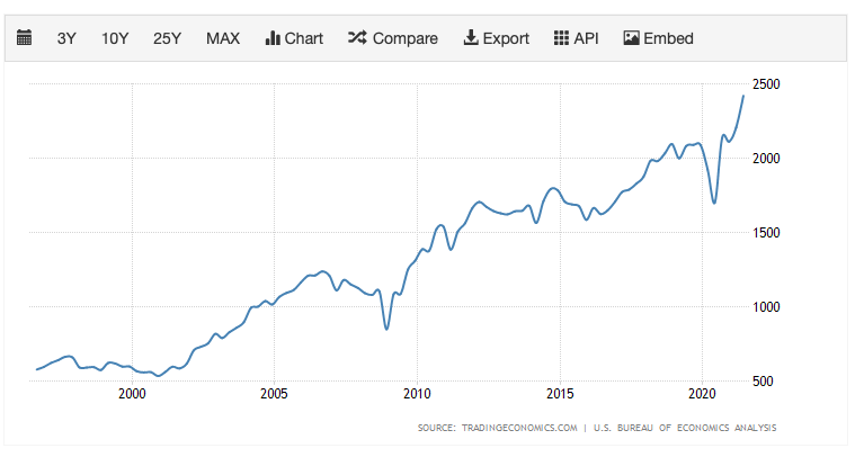
US Corporate Profits
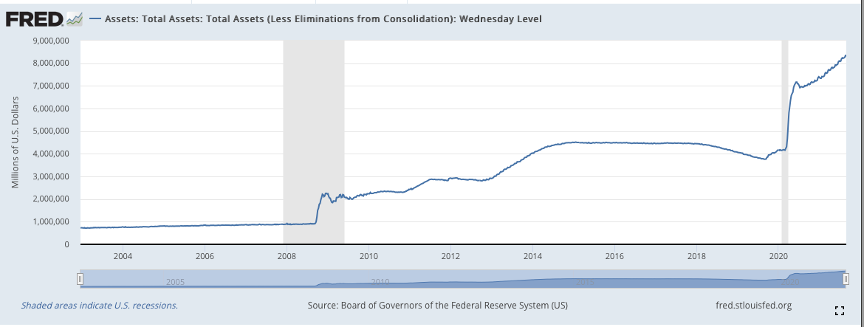
Federal Reserve Balance Sheet
Global Market Comments
March 25, 2024
Fiat Lux
Featured Trade:
(MARKET OUTLOOK FOR THE WEEK AHEAD, or THE BEST WEEK OF THE YEAR),
(PANW), (NVDA), (LNG), (UNG), (FCX), (TLT), (XOM), (AAPL), (GOOG), (MSTR), (BA), (FXY)

You need to have a sense of humor and a strong dose of humility to work in this market. After predicting last week that the market would NOT crash but grind sideways, it then posted the next week of the year. Stocks are actually accelerating their move to the upside.
Of course, we got a big assist from Fed Governor Jay Powell who practically wrote in his own blood a promise that interest rates would be cut at least three times by the end of the year. That is quite a gesture, and all risk assets loved it, even the ones that have been asleep for a year, like gold (GLD) and silver (SLV).
Miraculously, this does happen and there has been a big one over the last two years that nobody knows about.
Cheniere Energy (LNG) shipped 640 tankers full of natural gas (UNG) to Europe last year and 630 in 2022. One tanker provides enough gas to heat one million homes for a month. You can do the math. In total, it has sent out 3,400 tankers since 2016, mostly to China.
When Russia invaded Ukraine in 2022, Europe was totally dependent on Vladimir Putin for gas. Any doubt about the Russian supply was ended when the Nordstream undersea pipeline was mysteriously blown up. A total cut-off would have been an economic disaster and caused the collapse of NATO.
Two years ago, it was believed that even if we could get the gas to Europe, there were no facilities to liquefy natural gas as it is shipped back into natural gas. Then 16 floating de-liquefaction plants showed up out of nowhere.
Natural gas demand has been soaring in the US as well. Over the past 20 years, coal has dropped from generating 50% of the US electric power supply to only 19% (the unused American share of the coal was sold to China). That has eliminated 500 million tons of carbon dioxide from entering the atmosphere.
If you noticed that the skies over American cities are getting clearer, this is the reason.
Much has been made over Biden’s “pause” of permitting for new natural gas facilities. The reality is that it will take four years to build the 16 new gas export facilities that have already been approved. By then, we’ll have a new president. All Biden did was throw a bone at the environmental wing of his party. Such are the ways of Washington.
By the way, the Republican Party now has an environmental wing too. Who knew? It’s all proof that if you live long enough, you see everything.
One of the reasons I have been in love with cybersecurity stocks like Palo Alto Networks (PANW) for the past decade is that hacking is the ultimate growth industry. It never goes out of style, is recession-proof, and is growing at an exponential rate.
It is also getting more sophisticated. The big hackers are franchising their business models, inviting in criminals with minimal computer knowledge, vastly increasing their numbers. They are attacking small vendors to large companies to get access to the big ones. They are also picking targets too poor to afford the big cybersecurity companies. The City of Oakland is a classic example, which was prevented from paying its teachers for six months. And now they have AI.
Spending on cybersecurity is expected to grow from $188 billion in 2023 to $215 billion this year, a gain of 14.36%. The number of data breaches has rocketed by 78% over the past two years. Buy (PANW) on dips, which we are seeing right now.
“We’re going to need a bigger GPU” to borrow a famous line from Stephen Spielberg’s blockbuster Jaws.
If you want a peak at the future, both of our own and NVIDIA stock, check out the company’s latest entry into the chip wars, the $50,000 Blackwell GPU, available in a few months. In layman’s terms, it offers four times the computing ability but requires only one-quarter of the electric power, which is increasingly becoming an AI issue. It also uses deep learning to write its own software.
The chip was introduced by CEO Jensen Huang at the Developers conference in San Jose, which I attended in a venue normally occupied by rock stars. Huang started the conference by warning he was not there to sing. But perform he did, accompanied by a group of dancing robots powered by AI.
And while NVIDIA’s sales have tripled over the past year, you ain’t seen anything yet. When I recommended (NVDA) for the millionth time at $400 a share last October, my long-term target was $1,000. It recently hit $975, now stands at $943, and shows no sign of abating. NVIDIA could well keep powering on until the actual release of the Blackwell chip.
As in Jaws, I sense a feeding frenzy coming and (NVDA) shorts are the bait.
In February we closed up +7.42%. So far in March, we are up +3.53%. My 2024 year-to-date performance is at +6.67%. The S&P 500 (SPY) is up +9.22% so far in 2024. My trailing one-year return reached +56.98% versus +52% for the S&P 500.
That brings my 16-year total return to +683.30%. My average annualized return has recovered to +51.57%.
Some 63 of my 70 round trips were profitable in 2023. Some 11 of 19 trades have been profitable so far in 2024.
I miniated no new longs last week, content to let my existing longs run in Freeport McMoRan (FCX), bonds (TLT), and ExxonMobile (XOM). I am 70% in cash given the elevated state of the market and am looking for new commodity and energy plays to pile into.
Fed Chair Jay Powell Promises Three Interest Rate Cuts of 25 basis points each, at his press conference on Wednesday. Powell said he did not see "cracks" in the labor market, which he described as "in good shape," noting that "the extreme imbalances that we saw in the early parts of the pandemic recovery have mostly been resolved." These are very pro-risk statements. Buy the dips in everything.
Fed to Dial Back Quantitative Tightening, or QT from the current $120 billion a month. It’s a huge plus for risk assets and explains why the most liquidity-driven ones like gold and silver had such a great day. Buy (GLD) and (SLV) on dips.
The Dept of Justice Goes After Apple on Antitrust, on its 61.3% share of the US smartphone market. It accused the iPhone maker of blocking rivals from accessing hardware and software features on its popular devices. Google’s (GOOG) Android actually has a bigger global market share at 70.3% with Apple at only 24%. This is another waste of time that will last ten years and go nowhere.
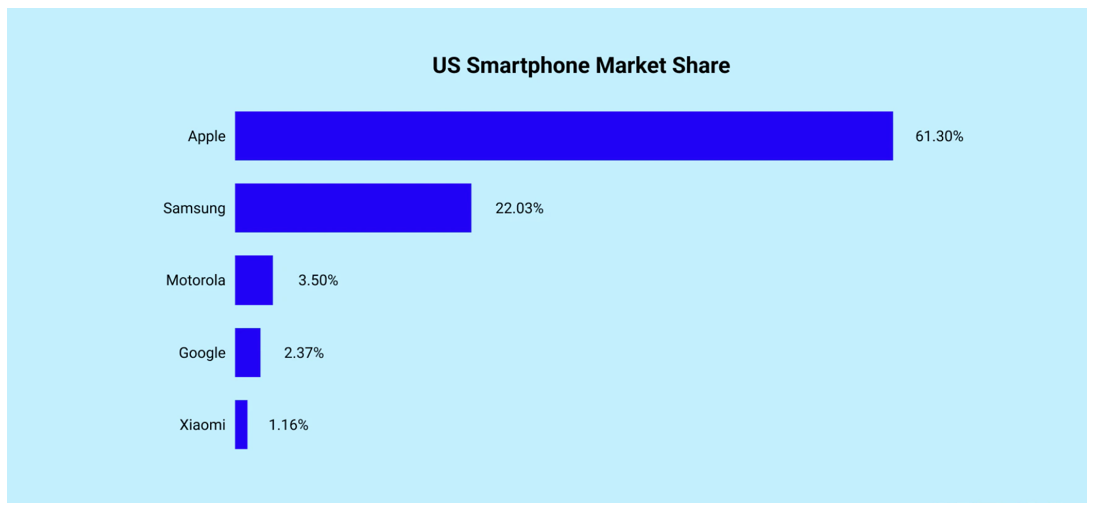
Bank of Japan to Cut Interest Rates as Early as April, bringing to an end a 34-year stimulus program that was a dismal failure. The Japanese yen (FXY) should rocket, but Japanese stocks not so much.
MicroStrategy (MSTR) Dives 18%, the largest owner of Bitcoin, on a crypto correction. MicroStrategy is the largest corporate owner of Bitcoin. (MSTR) just completed a massive borrowing to buy more crypto at the top. After SEC approval of ETFs and the imminent halving, what is left to drive crypto? Avoid (MSTR) which was blindsided by the last 90% crypto correction.
Existing Homes Sales Soar 9.7% in February to 4.38 million units, on a seasonally adjusted annualized basis. Inventory rose 5.9% year over year to 1.07 million homes for sale at the end of February. That represents a still low 2.9-month supply at the current sales pace. Higher demand continued to push the median price higher, up 5.7% from the year before to $384,500.
Home Prices Have Risen by 2.4 Times the Inflation Rate Since 1960. The cost of a typical house in the U.S. is nearly half a million dollars: the median price for a home in the U.S. is $412,778, according to Redfin data. That’s what successful demographic tailwinds leading to a chronic housing shortage get you.
Boeing is Leasing 36 Airbuses, to meet its own unfilled orders caused by production delays. Another panel fell off an airborne plane last week in Medford, OR. Looking for missing parts has become a regular part of every Boeing landing. This is an act of desperation. Avoid (BA)
My Ten-Year View
When we come out the other side of the recession, we will be perfectly poised to launch into my new American Golden Age or the next Roaring Twenties. The economy decarbonizing and technology hyper accelerating, creating enormous investment opportunities. The Dow Average will rise by 800% to 240,000 or more in the coming decade. The new America will be far more efficient and profitable than the old.
Dow 240,000 here we come!
On Monday, March 25, at 7:00 AM EDT, the US Building Permits are announced.
On Tuesday, March 26 at 8:30 AM, S&P Case Shiller for February is released.
On Wednesday, March 27 at 11:00 AM, the MBA Mortgage Data is published
On Thursday, March 28 at 8:30 AM, the Weekly Jobless Claims are announced. The final read of the Q2 US GDP is also out.
On Friday, March 29 at 2:00 PM, Personal Income and Spending is out. The Baker Hughes Rig Count is printed.
As for me, as I am about to take off for Cuba to visit Finca Vigia (Lookout Farm), the home of Earnest Hemingway and Martha Gellhorn I thought I’d review my long history with this storied family. This is where he finished For Whom the Bells Toll, his epic novel about the Spanish Civil War.
My grandfather drove for the Italian Red Cross on the Alpine front during WWI, where Hemingway got his start, so we had a connection right there going back over 100 years.
Since I read Hemingway’s books in my mid-teens, I decided I wanted to be him and became a war correspondent. In those days, you traveled by ship a lot, leaving ample time to finish off his complete work.
I visited his homes in Key West and Ketchum Idaho. In 2023, he stayed at his Hotel Poste room in Cortina, Italy where he lived for five months during the 1950s. His Cuban residence was high on my list, now that Castro is gone.
I used to stay in the Hemingway Suite at the Ritz Hotel on Place Vendome in Paris where he lived during WWII. I had drinks at the Hemingway Bar downstairs where war correspondent Ernest shot a German colonel in the face at point-blank range. I still have the ashtrays.
Harry’s Bar in Venice, a Hemingway favorite, was a regular stopping-off point for me. I have those ashtrays too.
I even dated his granddaughter from his first wife, Hadley, the movie star Mariel Hemingway, before she got married, and when she was still being pursued by Robert de Niro and Woody Allen. Some genes skip generations and she was a dead ringer for her grandfather. She was the only Playboy centerfold I ever went out with. We still keep in touch.
So, I’ll spend the weekend watching Farewell to Arms….again, after I finish this newsletter.
Oh, and if you visit the Ritz Hotel today, you’ll find the ashtrays are now glued to the tables.

Hemingway in 1917
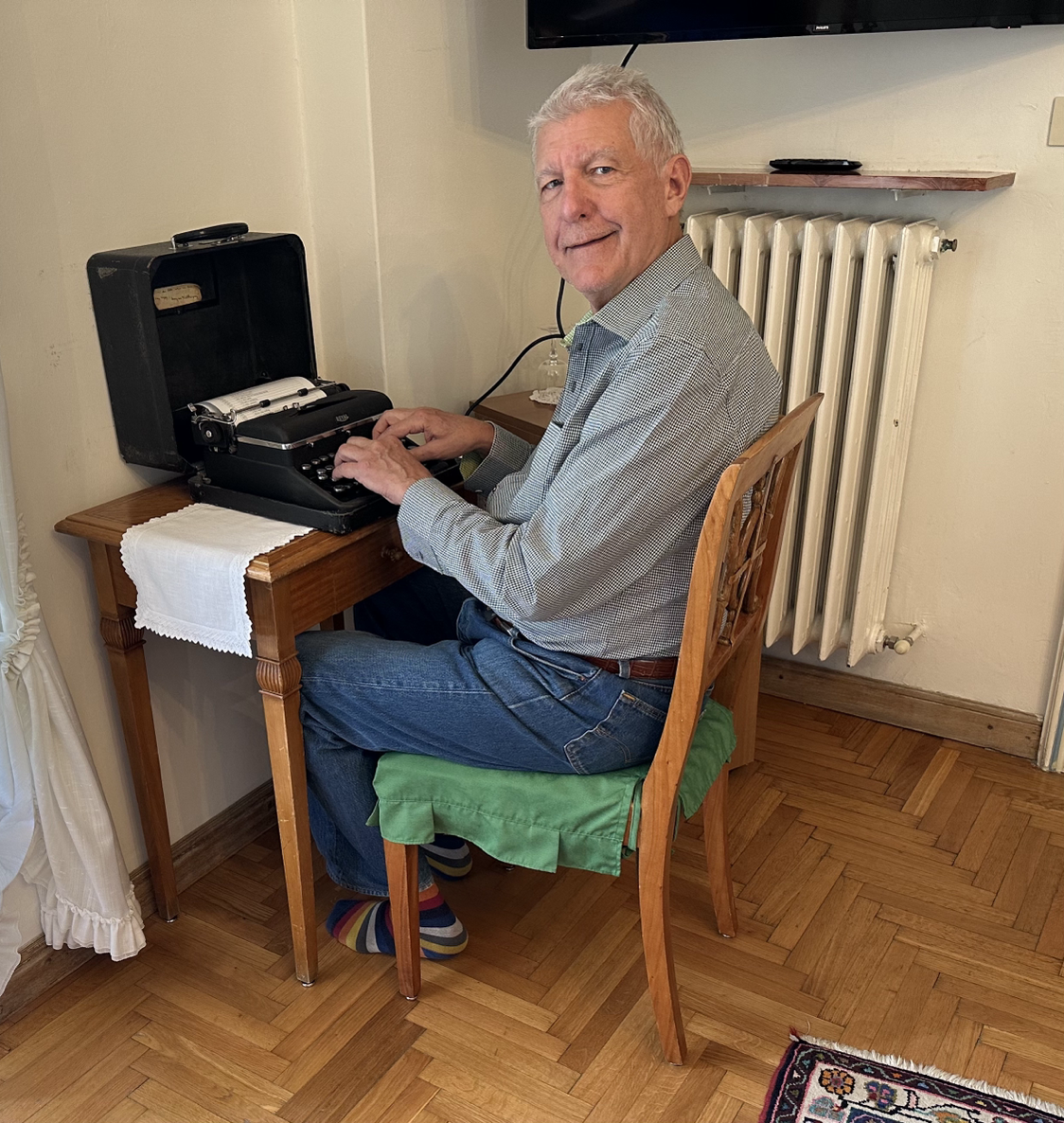
At Work on Hemingway’s Typewriter


Good Luck and Good Trading,
John Thomas
CEO & Publisher
The Diary of a Mad Hedge Fund Trader
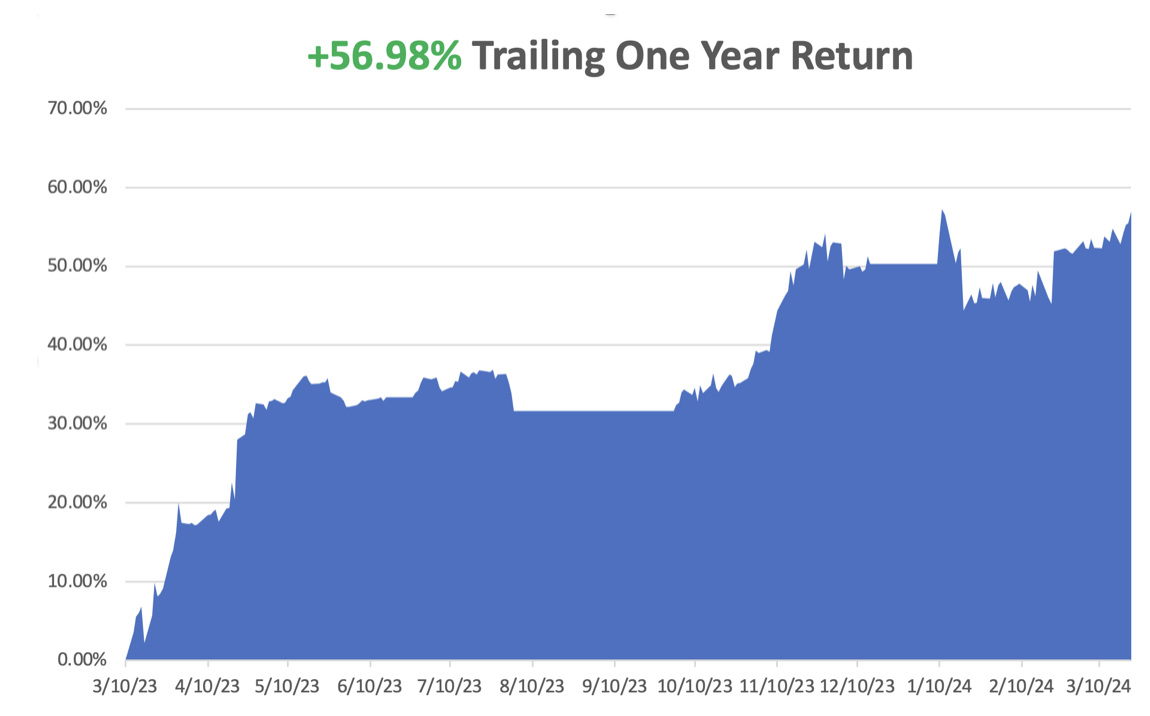
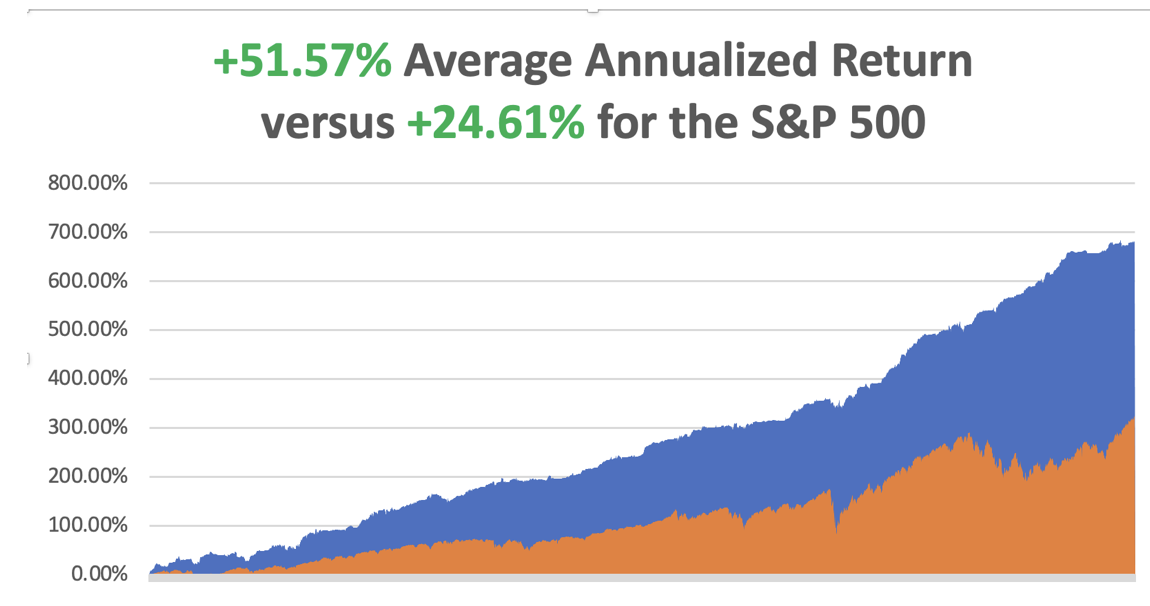
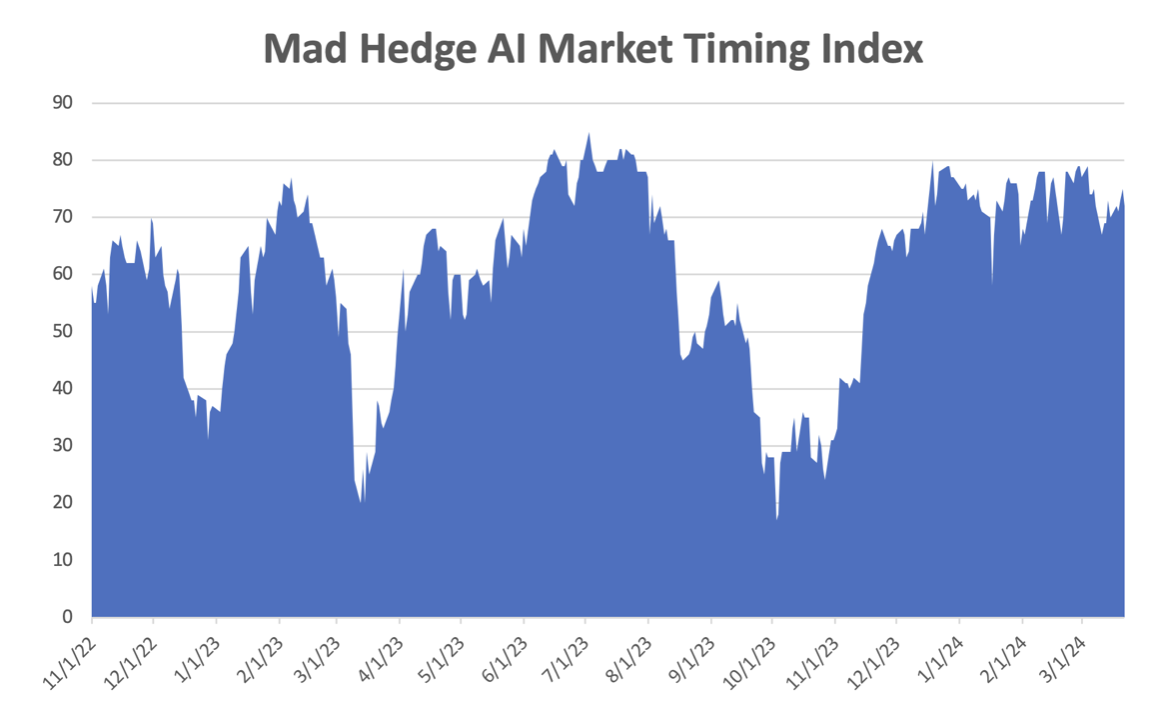
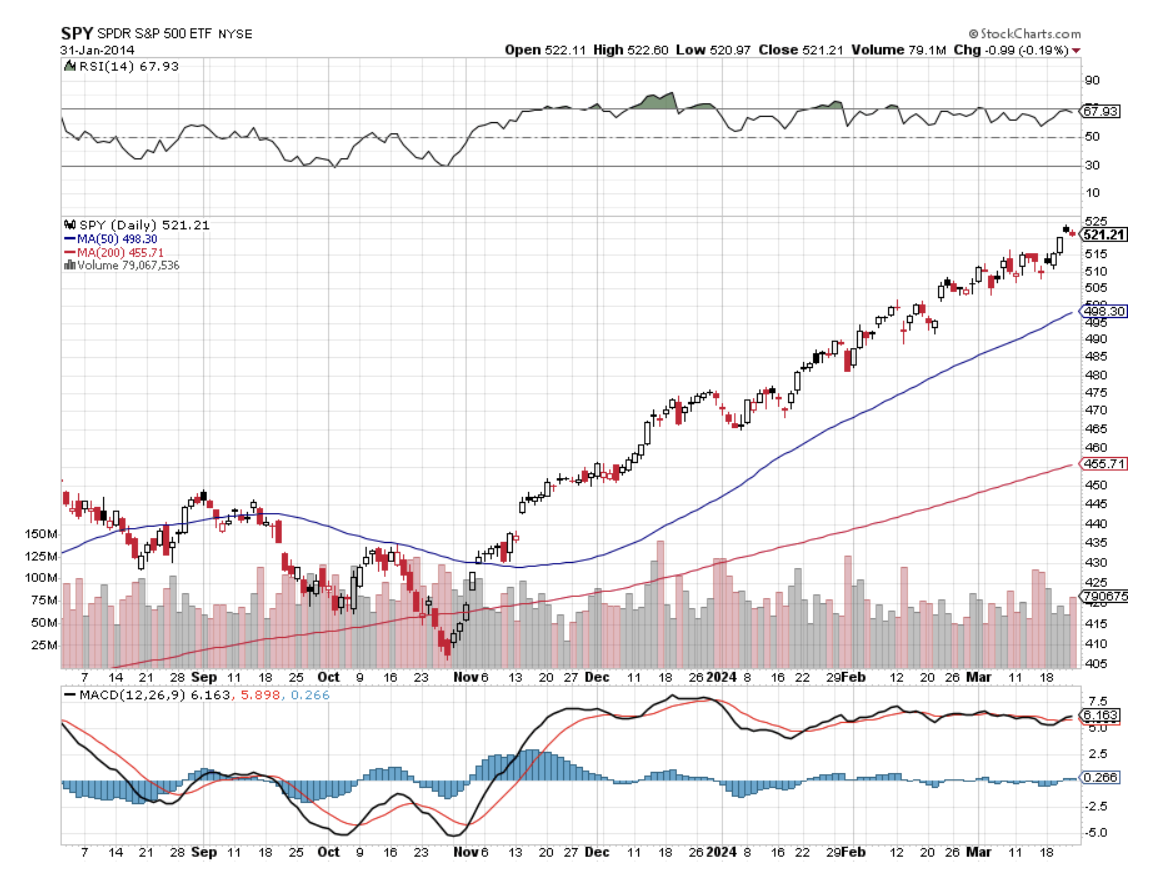
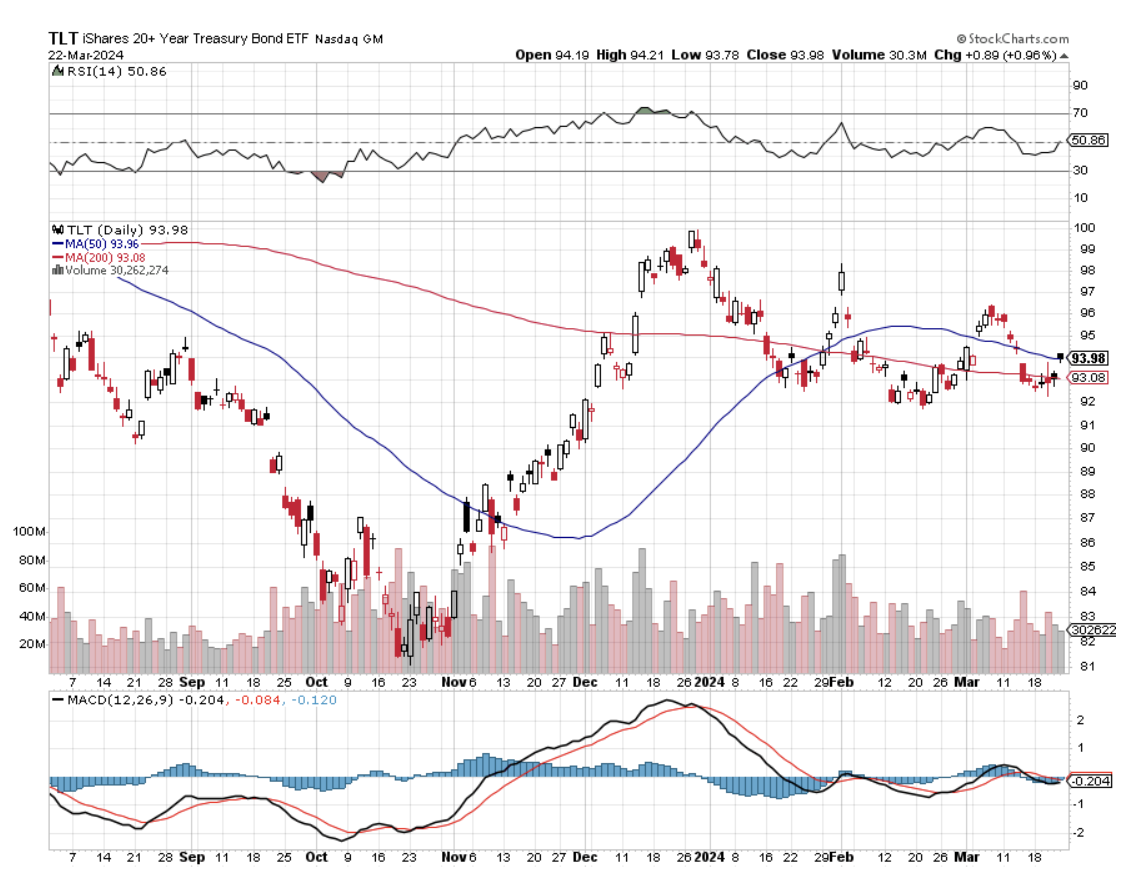

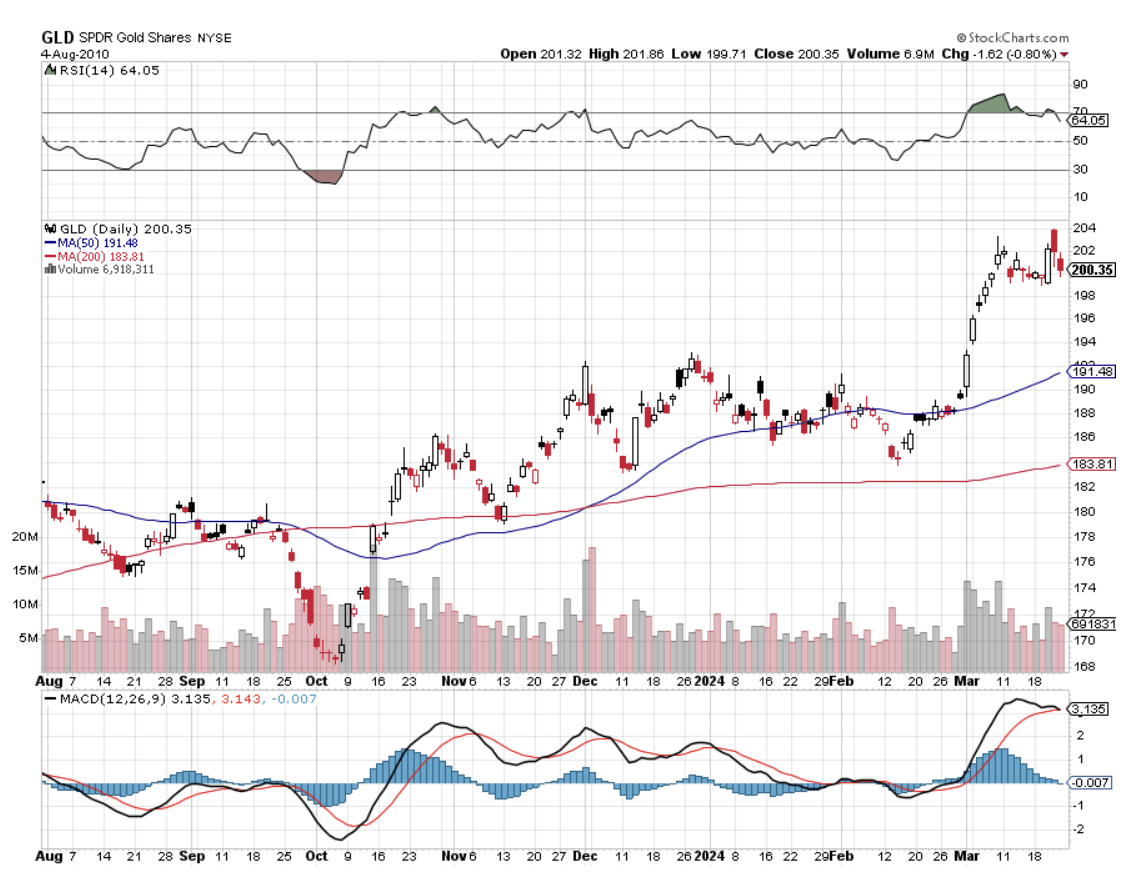
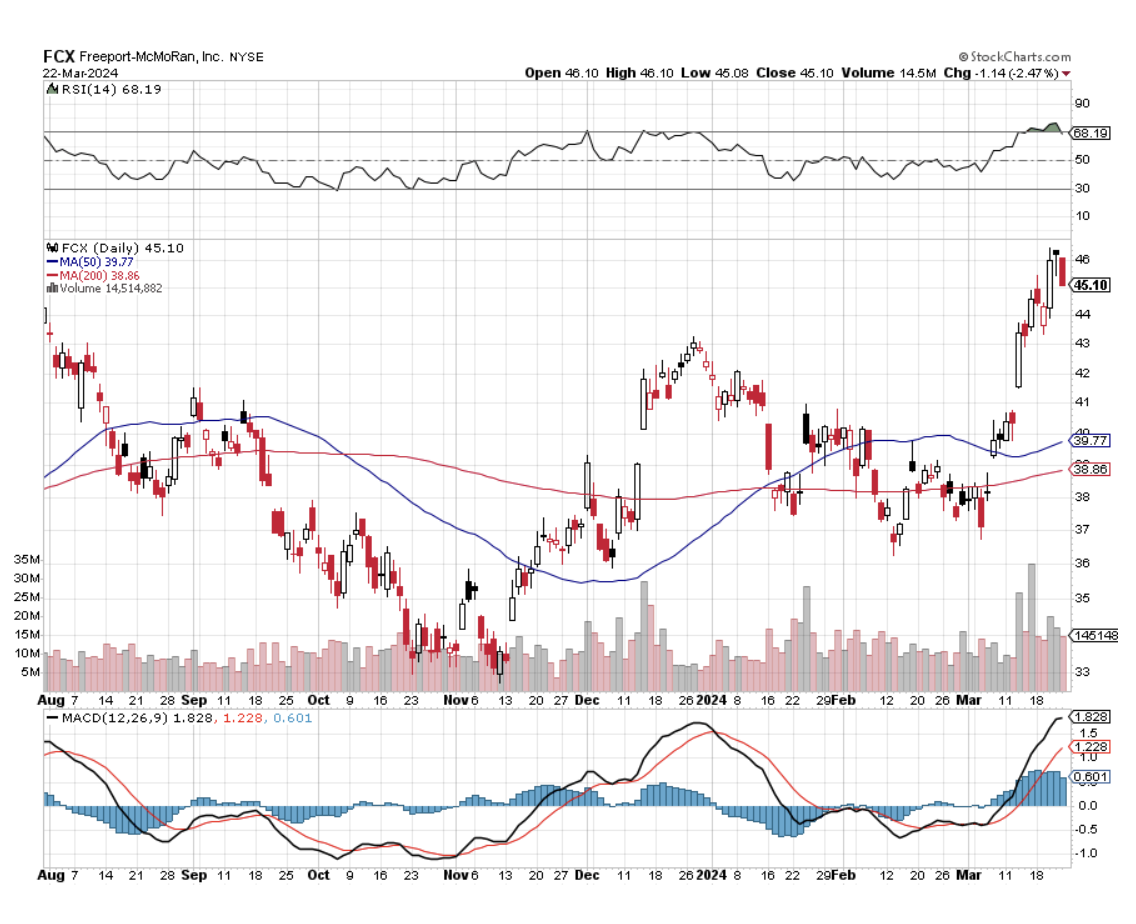
Legal Disclaimer
There is a very high degree of risk involved in trading. Past results are not indicative of future returns. MadHedgeFundTrader.com and all individuals affiliated with this site assume no responsibilities for your trading and investment results. The indicators, strategies, columns, articles and all other features are for educational purposes only and should not be construed as investment advice. Information for futures trading observations are obtained from sources believed to be reliable, but we do not warrant its completeness or accuracy, or warrant any results from the use of the information. Your use of the trading observations is entirely at your own risk and it is your sole responsibility to evaluate the accuracy, completeness and usefulness of the information. You must assess the risk of any trade with your broker and make your own independent decisions regarding any securities mentioned herein. Affiliates of MadHedgeFundTrader.com may have a position or effect transactions in the securities described herein (or options thereon) and/or otherwise employ trading strategies that may be consistent or inconsistent with the provided strategies.
This site uses cookies. By continuing to browse the site, you are agreeing to our use of cookies.
OKLearn moreWe may request cookies to be set on your device. We use cookies to let us know when you visit our websites, how you interact with us, to enrich your user experience, and to customize your relationship with our website.
Click on the different category headings to find out more. You can also change some of your preferences. Note that blocking some types of cookies may impact your experience on our websites and the services we are able to offer.
These cookies are strictly necessary to provide you with services available through our website and to use some of its features.
Because these cookies are strictly necessary to deliver the website, refuseing them will have impact how our site functions. You always can block or delete cookies by changing your browser settings and force blocking all cookies on this website. But this will always prompt you to accept/refuse cookies when revisiting our site.
We fully respect if you want to refuse cookies but to avoid asking you again and again kindly allow us to store a cookie for that. You are free to opt out any time or opt in for other cookies to get a better experience. If you refuse cookies we will remove all set cookies in our domain.
We provide you with a list of stored cookies on your computer in our domain so you can check what we stored. Due to security reasons we are not able to show or modify cookies from other domains. You can check these in your browser security settings.
These cookies collect information that is used either in aggregate form to help us understand how our website is being used or how effective our marketing campaigns are, or to help us customize our website and application for you in order to enhance your experience.
If you do not want that we track your visist to our site you can disable tracking in your browser here:
We also use different external services like Google Webfonts, Google Maps, and external Video providers. Since these providers may collect personal data like your IP address we allow you to block them here. Please be aware that this might heavily reduce the functionality and appearance of our site. Changes will take effect once you reload the page.
Google Webfont Settings:
Google Map Settings:
Vimeo and Youtube video embeds:
